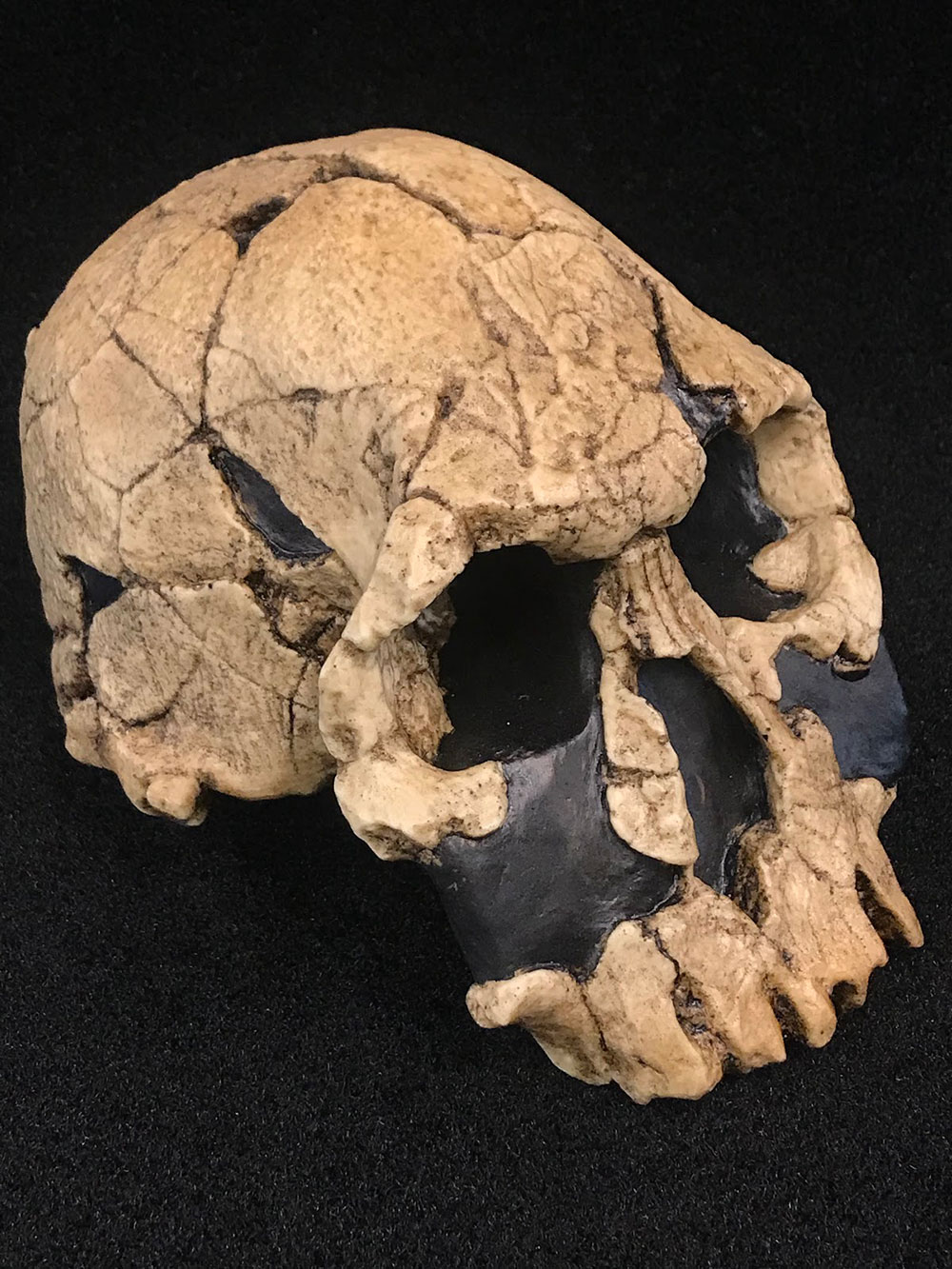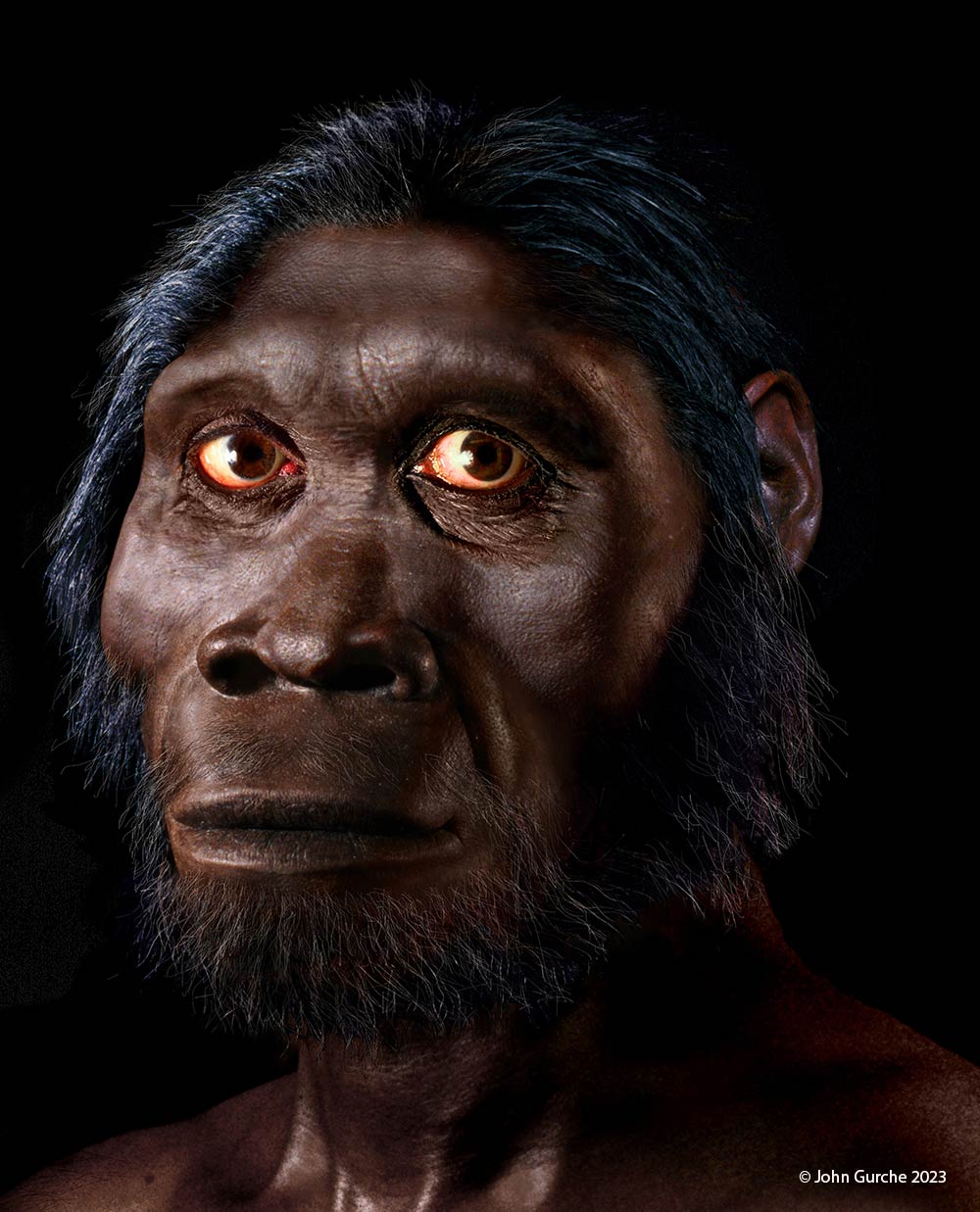Homo rudolfensis
Cranium KNM-ER 1470 - 1.9 - 1.8 Million Years Ago


The Homo rudolfensis cranium KNM-ER 1470 was discovered by B. Ngeneo in 1972 at Koobi Fora in Kenya and described by R. Leakey in Nature in 1973. The classification of this specimen has been a matter of debate since its discovery, with some scientists arguing in favor of Australopithecus, and some in favor of a species of Homo. Originally dated (incorrectly) a million years before H. habilis, the most current theory holds that though contemporaneous and geographically concurrent with H. habilis, this specimen is in fact a different species of Homo. KNM-ER 1470 features a 750 cc braincase, too large for australopithecines, and perhaps even for H. habilis, and lacks the crests and heavy muscle markings that characterize australopithecine skulls, as well as lacking the brow ridges associated with Homo erectus. Several features differ from other H. habilis specimens (a longer face, squared upper jaw, and short, shallow palate), leading some scientists to conclude that there is too great a range of characteristics within the specimens for them to be a single species. In 1986 Valerii Alexeev proposed another species within Homo, giving KNM-ER 1470 the scientific name Homo rudolfensis.
Middle Eastern Neanderthal skulls are less robust than those of European specimens in terms of the brow ridge, jaw, nose, and back of the skull and the skull bones are generally thinner by comparison. These differences probably represent adaptations to the warmer climate. The average brain size for Neanderthals is estimated at 1500 cc, larger than that of modern humans.
Read more Australian Museum's Homo rudolfensis
- Hominin Skulls - Select a Species
- Ardipithecus kadabba
- Ardipithecus ramidus
- Australopithecus afarensis
- Australopithecus africanus
- Australopithecus anamensis
- Australopithecus garhi
- Australopithecus sediba
- Denisovans
- Homo antecessor
- Homo erectus
- Homo floresiensis
- Homo habilis
- Homo heidelbergensis
- Homo naledi
- Homo neanderthalensis
- Homo rudolfensis
- Homo sapiens
- Kenyanthropus platyops
- Ororrin tugenensis
- Paranthropus aethiopicus
- Paranthropus boisei
- Paranthropus robustus
- Sahelanthropus tchadensis

